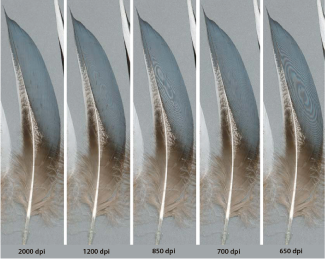







The Feather Guide
 In 1998, the Swiss-French natural history publisher Delachaux et Niestlé, with seats in Paris and Lausanne, expressed the desire to launch a photographic guide to the feathers of European birds in French language. Such a guide to feathers, based on real photographs, does not yet exist in the market.
In 1998, the Swiss-French natural history publisher Delachaux et Niestlé, with seats in Paris and Lausanne, expressed the desire to launch a photographic guide to the feathers of European birds in French language. Such a guide to feathers, based on real photographs, does not yet exist in the market.
Even the most comprehensive work on feathers to date, planned in 10 volumes by the world’s leading feather expert, Dr. rer. nat. habil. Wolf-Dieter Busching, the Director of the Johann Friedrich Naumann Museum in Köthen, Germany, is based on drawings, not photographs. His drawings are excellent and highly detailed, but they are often black and white and not as accurate as color photos. Dr. Busching's mammoth work has not been completed. Volume 1 of this work, titled "Handbuch der Gefiederkunde europäischer Vögel", was published by the German publisher AULA in 1997. For other publications by this lead author, see the literature list at the end.
This collection used here was donated to the Zoological Museum of the University of Hamburg in 1996 by a contract that gives its previous holder life-long unrestricted access. The institutions and individuals who helped with the buildup of the collection are listed in the appendix.
Bernd and Gabriel met with Jean Arbeille. During this meeting, the composition of the feather portraits was discussed, using the feathers of a Chaffinch (Fringilla coelebs) as examples.
The following decisions were reached at the Frankfurt meeting:
1. It is sufficient to illustrate only the feathers of the right half of the body because the feathers of the left half are symmetrical.
2. Each feather is to be shown in full length and without overlap from neighboring feathers.
3. The background to be used in the portraits should not be too light, not too dark, and not colorful, as the background color partly shines through the feathers and influences their appearance. The light fringes on many feathers should stand out clearly from the background. A neutral mid-grey background is agreed to be the best average solution. The feathers are fixed to this background on their calamus with transparent glue.
4. For optimal use of space and the reader‘s overview, the feathers on all portraits are arranged in the same way: The wing feathers (primaries, secondaries and tertials) are aligned in the lower half; the tail feathers (rectrices) are placed in the upper right quarter. The remaining upper left quarter is filled with a selection of coverts and body feathers, with at least 1-2 feathers for each type of feather. All feathers are to be labeled with their corresponding abbreviations.
5. For most Passerine species, including the Chaffinch that was used as the example, this arrangement of feathers fits on an A5 sheet. Therefore, A5 is chosen as the standard size for all feather portraits. For larger bird species, the size of the sheets is chosen in such a way that they can be reduced to A5 in steps of full percentages, e.g. 90%, 80%, 70%, 60%, 50%, etc.
These decisions from the Frankfurt meeting are consequently applied to the production of all feather portraits in the coming years. Mr. Arbeille proposes a time frame of one to one and a half years to carry out the project. Bernd and Gabriel confirm this is feasible. They start to write species accounts and also start to work on the feather portraits. Many cardboard producers across Germany and Europe are contacted and asked to send samples of mid-grey cardboard. The final choice for the feather portraits falls on a high-quality cardboard produced in Sweden.
In 2009, Gabriel launches a DVD with feather portraits of all Songbird species of the Western Palearctic. The DVD is titled "The Feather Atlas for the Birds of the Western Palearctic". There are 1280 full-size feather portraits of Songbirds featured on this DVD, in addition to many smaller ones illustrating tail variations and other portions of the plumage.
 English
English Deutsch
Deutsch Français
Français Italiano
Italiano 日本語
日本語 Español
Español Português
Português Russian
Russian Chinese (Simp.)
Chinese (Simp.) Tcheco
Tcheco Polish (Store only)
Polish (Store only)